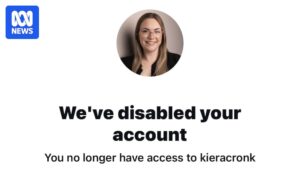
“That’ll be $400,” the receptionist says coolly at the gynaecologist’s office. My card hits the machine with a dull clack. Ouch. After this, rent, and bills, I will be left with about $100 to play with until my next pay.
Since my early teens, I have been grappling with heavy bleeding and debilitating pain, leading to tens of thousands in medical bills for “multidisciplinary care.” Like many with adenomyosis and endometriosis, I’m accustomed to a rigmarole of referrals and cold proddings by strangers, but the exorbitant out-of-pocket costs still sting.
Navigating Healthcare: A Tale of Two States
When I moved to Sydney from Queensland this year, I found myself navigating a different public healthcare system. Queensland has a clear referral criterion for its public system, while New South Wales has statewide criteria for general gynaecology “coming in 2026.”
A month before dropping that $400 at the gynaecologist, I visited a new GP in Sydney about some abnormal bleeding and pain. A panel of tests came back normal, other than indicators of polycystic ovarian syndrome (PCOS), but the doctor insisted my symptoms required a specialist ultrasound and gynaecologist referral.
She glanced at my address and said I’d have to be referred privately because my local health district lacked a public option. I asked her what people in my postcode are supposed to do if they can’t afford a gynaecologist, and she conceded that one hospital in the area can sometimes squeeze in public gynaecology patients.
The Financial Burden of Chronic Conditions
As I waited to hear back from my referral to the public gynaecologist, I went for the ultrasound recommended by my GP, which cost $540.95 with a $95.95 Medicare rebate. It left me $445 out of pocket.
In 2020, my first gynaecologist in Brisbane told me treatment options for chronic pelvic pain are like an “iceberg,” with no quick fix. She handed me a laundry list of referrals for multidisciplinary care to attend to before my next appointment.
GP long consultation fee: $198; $84.90 Medicare rebate. Gynaecologist: $350; $78.05 Medicare rebate. Ultrasound: $350; $90.50 Medicare rebate. Psychiatrist: $340 for half-hour check-in; $130.85 benefit. Dietician: $222.95; with supplements costing $100. Pelvic physio (two visits): $95 per half-hour session ($190) and pelvic floor exercise product for $68. CBD oil: $155 out of pocket, not covered by PBS.
Taking out those measly rebates, my total bill that month came to $1,589.65. This doesn’t include the cost of other pain relief products, medicine, or groceries and supplements suggested to help relieve inflammation.
The Public System: A Waiting Game
Back in Sydney, after $445 out of pocket for the pelvic ultrasound, I waited for another month to see if I could get on the public gynaecologist waitlist. Worried about my symptoms and with no word from the public system, I bit the bullet and returned to my GP ($88.90; $43.90 rebate), for an interim referral to a private gynaecologist.
For context, abnormal bleeding and pain can be a sign of life- and fertility-threatening problems, which is why GPs tend to make specialist referrals when a patient presents with these symptoms, even though they are regular occurrences for those with adenomyosis, endometriosis, and PCOS.
I borrowed $400 and headed to the private gynaecologist, who prescribed some new medication and asked me to book a follow-up consultation. From presenting at my GP for abnormal bleeding to getting to the gynaecologist, my costs were already $868.75 after Medicare rebate in the span of six weeks:
Two visits to GP: $238.80; Medicare rebate: $128.90. Ultrasound: $540.95; Medicare rebate: $95.95. Gynaecologist: $400; Medicare rebate: $86.15.
Systemic Challenges and Broader Implications
Two weeks after my private appointment, I received an automated rejection message from the hospital: “We are confirming we have received your referral from [GP name]. Unfortunately, our service cannot meet your current need.” It said “more information” was sent to my GP and I’d need to contact them for “more detail and to review other options.”
When I contacted my GP’s reception, they said my private appointment had “addressed the issue” so a public referral was unnecessary. I followed up, justifying that my chronic, incurable conditions require ongoing, expensive treatment. I never heard from my GP about why the first referral was rejected; I just received a message from NSW Health that a second referral was received. I’m still waiting to see if I can get on the public waitlist.
It is incredibly isolating haemorrhaging cash to healthcare costs while literally haemorrhaging blood. While I’m pursuing my dream career, I wish I was saving my wages to backpack the world instead of spending them on healthcare services designed for people outside my demographic, just to avoid being stabbed by lightning bolts of pain.
Despite National Action Plans to address conditions like endometriosis, which affects at least one in nine girls, women, and AFAB people, and even with the advantage of education and an urban postcode, I’m still thousands out of pocket. A 2019 national online survey revealed the average medical cost for chronic pelvic pain in Australia can reach $16,970 to $20,898 per woman annually.
To manage our symptoms, we have to take the right supplements, eat the perfect diet, do our exercises, see our specialists – and pay at every step. Then, when women do make it through the doors of the public system, we’re often still left to navigate medical misogyny.
The March 2024 #EndGenderBias Survey Summary Report found that women’s health conditions are disproportionately expensive to treat, with much of the management not funded by the public system. Along with paying more, two-thirds of Australian women have experienced gender bias or discrimination when seeking healthcare.
For those with fewer resources for bureaucratic navigation and advocacy, including BIPOC, rural people, and non-native English speakers, the gap is even more cruel. We assume healthcare is free in Australia, but the system is hard on those with chronic women’s health conditions, as if access to fundamental wellbeing is a luxury product.
Health reporter Natasha May’s series investigating specialist fees confirmed my experience of falling through Medicare’s “safety net,” and showed shouldering excessive out-of-pocket costs was a widespread national issue. Why is the onus on us to be perfect patients and expert bureaucratic navigators, all while crying out in pain?






